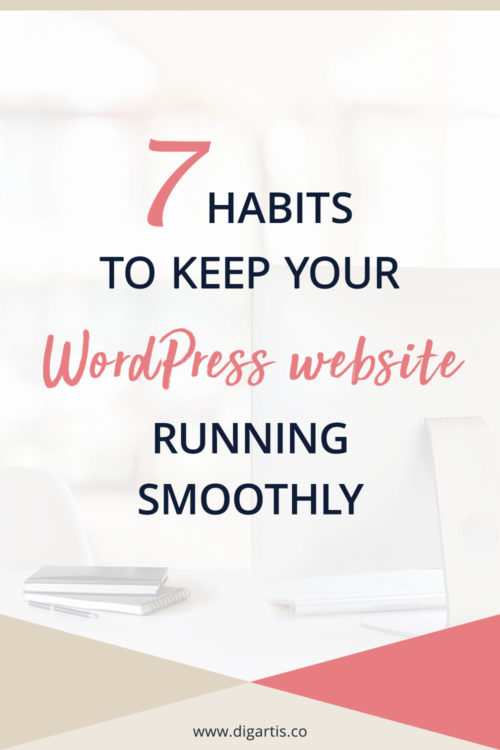Your new blog post is done, and you’re about to publish it. You’re feeling excited as your ideas are going to see the daylight. But before you finally hit that publish button, there are a few last things you need to do to make sure your blog post is set up for success.

1. Create a catchy and engaging post title
Your post title is the first thing people will see when deciding whether or not to click through and check out the whole blog post. You can have the most amazing content, but if the title does not catch the reader’s attention, they will move on to something more persuasive.
The title is also the most important piece of information for search engines. Adding a few keywords to it will benefit your post SEO greatly and help drive more traffic to your post.
In short, a good blog post title should:
- be persuasive to encourage your visitors to continue reading,
- include keywords, and
- be relevant to the content of the post – do not clickbait.
2. SEO-friendly URLs
SEO-friendly URLs are composed of meaningful words, rather than numbers and symbols. They are important for both search engines and website visitors. They should be accurate, well-structured, and help describe a web page content. When people see such URLs on search results pages and other websites, they are much more likely to click through, which is what we want.
A good URL should:
- include keywords,
- describe your content, and
- be well-structured and readable.
3. Split the text into smaller sections with headings
Is your post made up of enormous blocks of text? If so, let me give you some advice. Please don’t ever do that. By presenting your content in this fashion, you’re overwhelming your readers who will, more often than not, just throw in the towel and go someplace else.
Having your content nicely formatted improves readability, gives your post some structure and helps improve your post SEO. I recommend you to split your content into paragraphs composed of about 3 to 6 lines. Also, make sure you separate different sections of your post with a descriptive headline.
4. Link to relevant past posts
Internal links are a great way to keep visitors on your site longer. However, it’s important to know that these links should only point to web pages with content relevant to your current post and should help explain it further.
This technique helps improve the site architecture and navigation experience, both of which are important factors for search engines.
5. Optimize your images for SEO
We say that a picture says more than a thousand words. And this is especially true for blogs. A good blog post should have images to help readers explain the text content better and make it more visually appealing.
Another thing to keep in mind is that many people search for images on Google these days. So by optimizing your images, you can also get your fair share of traffic from Google image searches.
By optimizing images, we mean the following:
- give your images a readable name that contains keywords,
- compress the images to reduce their size and improve page load speed, and
- add an alt text and/or caption to describe what’s on the image.
6. Add a featured image
A featured image in WordPress is the most important image on your blog. Depending on the theme you are using, it usually shows up on the blog list page and inside the blog itself. It is often used for SEO purposes and sharing on social networks. So make sure you don’t forget this one!
7. Check your Yoast SEO score and improve where possible … but don’t obsess
Yoast is an awesome plugin that will help you optimize your WordPress website in a user-friendly way. It helps you add meta titles and descriptions for any page or post on your website. It also gives you scores on how your post is performing in terms of keywords frequency, readability, and so on. It’s good to pay attention to this, but do not obsess with it. Do not add keywords to your content just for the sake of it, but rather write your content organically.

8. Proofread
Yes, I know I am stating the obvious here. But we all make mistakes. I know I make tons of them. So make sure you proofread your content a few times before publishing or even better, get somebody else to read through it. It’s often hard to spot your own mistakes, so getting a fresh set of eyes can really help you with that.
9. Categorize your posts
Not all of your visitors will be interested in all of your content. By grouping similar posts into categories, your readers can quickly find the topics they find interesting. This is particularly important if you have a large blog, and you like to write about many topics.
10. Preview your blog post on desktop and mobile
Our goal as publishers is to reach as many people as possible with our amazing content. To achieve it, we need to make sure that the post looks good on desktop as well as mobile devices.
It’s very likely that you write and preview posts on a desktop or laptop computer like most of us. The thing is that even though it looks awesome on this very device, it might not look as good on a mobile, or even worse, it might not even be readable. If that’s the case, you might end up losing a big chunk of your potential audience, which would be a great shame. So before you wrap up and publish your post, always make sure you check it on at least one mobile device.
Are all of these steps part of your publishing routine? Is there anything else you think is important? We’d love to hear your thoughts on this!



